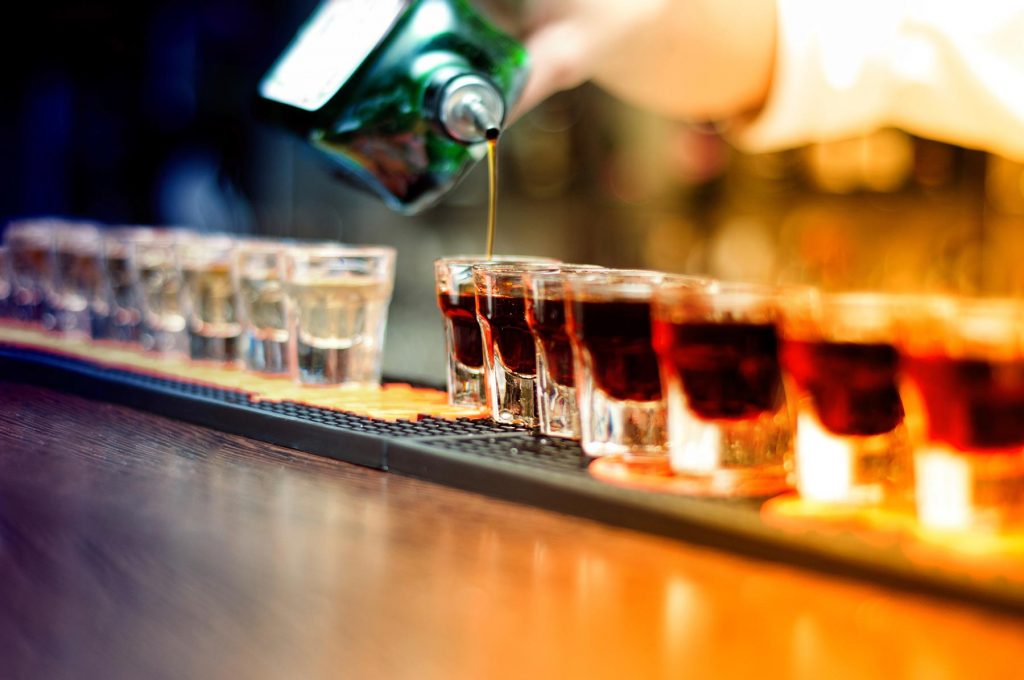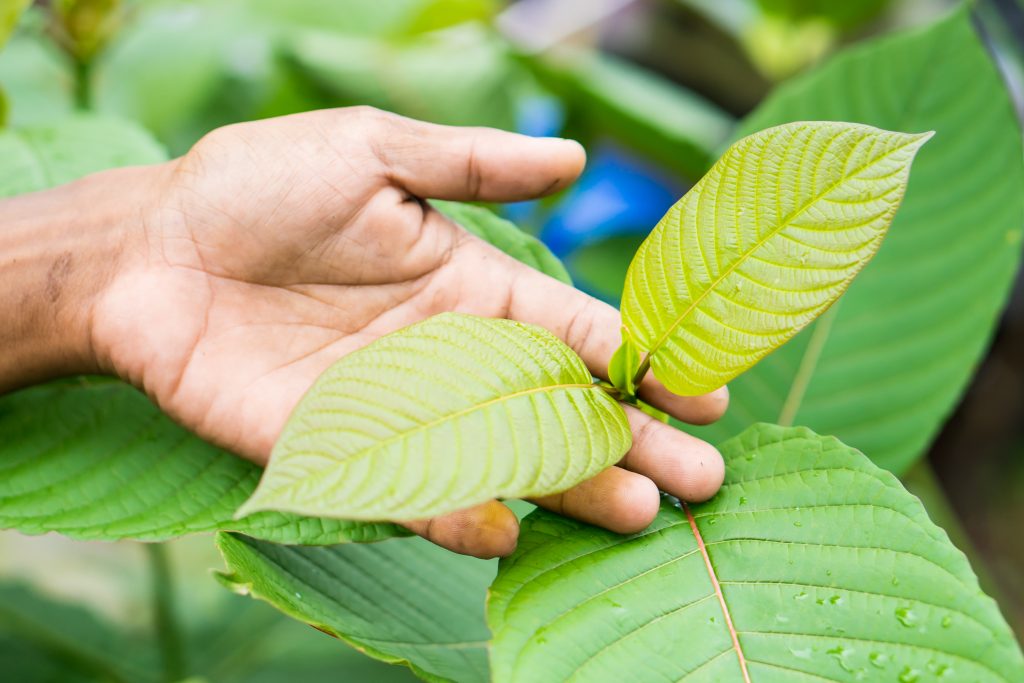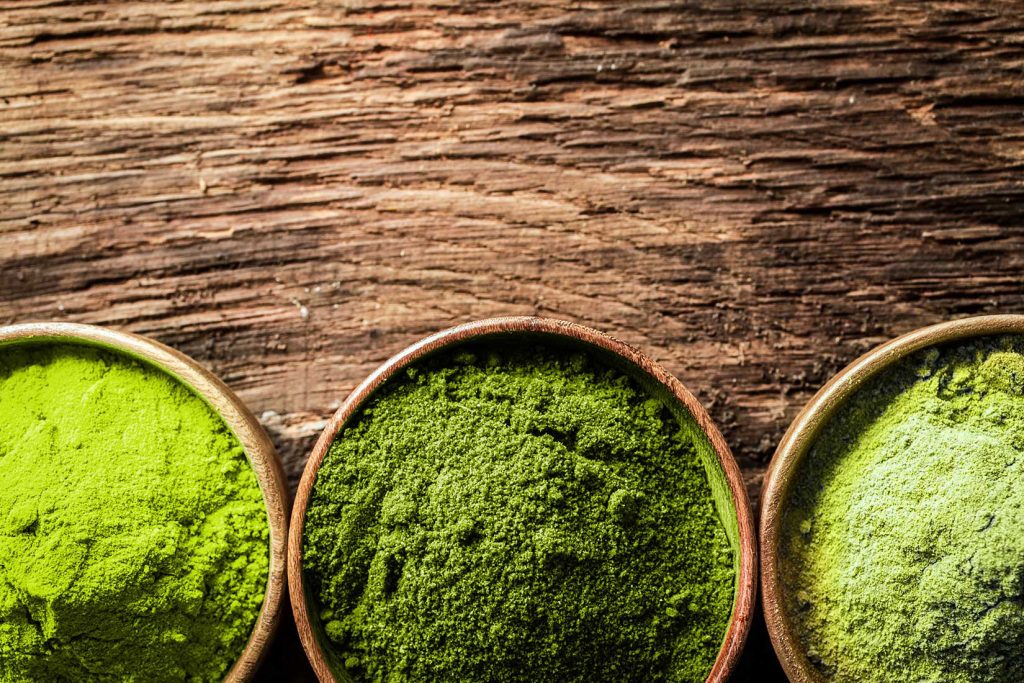“People who use drugs are as different to one another as coffee drinkers are.” (Dr James Rowe, specialist in the sociology of drug use)
The term “coffee drinkers” is cleverly chosen to feel incongruous. You’ve almost certainly accepted, refused, made or purchased coffee today, but no one self identifies primarily as a “coffee drinker,” and conversely, non “coffee drinkers” don’t peer into cafes and, stimulated by a sense of their own moral superiority instead of caffeine, instinctively filter everybody inside in an instant into an identikit stigmatizing stereotype. Caffeine’s a “drug” and it is addictive, but coffee’s an accepted part of our universal consciousness.
As the most exported consumer crop in the Rubiaceae plant family, coffee throws socioeconomic shade over its other relatives, but it isn’t the only psychoactive member of the clan. Like a cooler, less commercially-minded cousin with a healing touch, kratom -or Mitragyna speciosa– unfurls an evergreen trail through Southeast Asia, where it has been used as an herbal supplement and traditional remedy for hundreds of years.
It comes in leaf, powder, extract, capsule, pellet and gum form and you can smoke it, chew it or brew its leaves like a tea. It’s used widely for pain relief by sufferers of a great variety of conditions- including multiple sclerosis, cluster headaches and arthritis. Here’s a guide to the best strains to use for pain relief in 2017. It’s also an effective panacea to mental health conditions such as depression, anxiety and insomnia, can also be used as a cognitive enhancer (study aid) and enjoyed for pleasure: different strains vary in effect from the relaxing (Red Thai) to the euphoric (White Borneo).
But, despite kratom’s positive impact on many people’s lives, its popularity and legality worldwide is patchier than coffee’s. Because it has historically been less culturally visible, its reputation is considerably more chequered. Concerningly indeed, for the many people relying on kratom as a medicine, it is currently listed as a “Drug of Concern” in the US (the DEA’s banning wish list). It is a Schedule I substance in six states and narrowly escaped a federal ban in October 2016.
The American Kratom Association -which protects US citizens who use it from assaults on its legality- are categorical that: “Kratom is not a drug. Kratom is not an opiate. Kratom is […] more akin to tea and coffee than any other substances.” They’re adamant that we perceive kratom separately from the slew of man-made chemicals that the word “drug” evokes when used non-specifically, and rightly so. But, in the sense that its psychoactive components, principally mitragynine and 7-hydroxymitragynine, act on the brain’s opioid receptors to produce its positive effects – a wide array ranging from treating Fibromyalgia to dispelling anxiety- it’s fair to say that people who use kratom are “as different from one another as coffee drinkers are.”
Kratom’s most negative quality is its addictive potential. But, because it’s significantly less toxic than opiates, it is nonetheless hailed as an opiate alternative which could mitigate the current crisis in the US. Its history of opium-related controversy spans decades. Maia Szalavitz explains that in 1940’s Thailand, politicians banned it for entirely different reasons to the DEA: the opium tax takings were diminishing as more people found kratom to be a healthier alternative. Whatever its status is in relation to opiates, it seems there will always people with a non-holistic interest in seeing it banished to the wrong side of the law.
When the tabloids got hooked on ‘opioids’
“I wish they’d listen to the facts and stop this ridiculous witch hunt. Until this year I didn’t realize laws could actually be passed on speculation and nothing else […]. We need to keep Kratom legal. We need to make ignorance and speculation illegal,” says John, 58, who used kratom to come off prescription opiates. He refers to the fact that most of the current hype surrounding kratom is solely extrapolated from its action on the brain’s opioid receptors.
Kratom shares this behaviour with many other substances and stimuli, including alcohol, the sun, love, nicotine, alcohol, chocolate, stress, Cayenne pepper and breast milk. But damning “drugs” by drawing parallels between them and nominally similar bits of brain, usually namechecked with histrionic pride, is a classic media combat tactic in the ‘War on Drugs.’ Neuroscientist Dr Doris Payer zeroes in on this dubious technique when analysing an accident in a clinical trial in France involving the endocannabinoid system, which was co-opted by some journalists as an excuse to besmirch cannabis. Like the opioid receptors, she explains, “we’ve all got one.” Even Melanie Phillips.
“We all know how the British love a nice cup of tea, no surprise kratom infusion hits the spot every time.”
Riffing on the British stereotype of fetishizing certain stimulant-laced beverages, Kratom World trumpets kratom’s popularity in the UK. But, despite having been legal to purchase until very recently, it isn’t sufficiently prevalent to feature in DrugScience’s 2010 ranking of “Drug Harms in the UK”, where -with its 20 deaths worldwide in recent years, all of which occurred in combination with other substances- it would sit far below alcohol -which poisoned 8,758 UK residents in 2015.
Most forum contributors discussing kratom are from the US, and I became curious about who’s taking it in the UK. I met Livvie, 26, a business analyst from Manchester who uses it as an alcohol substitute. She discovered its effects in late 2015, when a colleague gifted her partner a generous bag of dried leaves: “I had a headache. We knew it could be used for pain relief, so I boiled a few leaves in some water, and,” (true to national form) “we made it into a tea.”
Sitting on the sofa watching Netflix, she felt the pain ebbing away, but she was surprised by what happened next: “as I stood up, I felt like I was in slow motion- it was living a special effect in a video game. Then I noticed it was like being drunk, but with none of the bad bits.” We run through the “bad bits” of being drunk: the loss of lucidity, the desire to drink more, the extra calories, the expense, the cringing flashbacks as you remember bits of what you said in the taxi to Andrew from Human Resources…

Could Kratom provide an alternative to more traditional, alcohol based beverages? (Source: Shutterstock)
“In a sense, I’m ‘Every Girl,’” says Livvie. “I don’t want to spend money unnecessarily; I don’t want to get fat unnecessarily. If you ask most people about their biggest worries, it’s their finances, or their health: alcohol feeds into both.” And inevitably, there’s the hangover: “I’ve had enough unproductive mornings. Companies must lose billions to hangovers, if you add the wasted time up!” She’s right on the money: hangovers cost the UK 8 – 11 billion per year, according to a 2017 report by Institute of Alcohol Studies.
The next morning, Livvie was elated to feel “…normal!” Buoyed up by the prospect of significant savings, sociable evenings, and no hangovers, she crushed the remainder of the leaves and stuffed them into pill capsules: a rudimentary means of controlling the duration and intensity of her high, akin choosing how many units of alcohol to drink. But she’s noticed that she changes her behaviour when taking kratom: “I’m more precise about how much I’m taking- I’ll take one or two capsules. With alcohol, no one thinks in units; we want to drink more.” Does Livvie drink “more” because it’s a part of British culture? Absolutely. “Beer gardens in the summer are my favourite. I could spend hours there, but that often means drinking six or seven drinks.” What about going to pubs and not drinking? As time progresses, it’s correspondingly hard to ignore the fact that you’re, blood alcohol content-wise, increasingly not “on a level” with the rest of the room.
Besides, alcohol and kratom both usefully dissolve shyness. “It’s that best-mate feeling,” she gushes. A sense of wanting to “tell your mates exactly why you love them.” But, unlike alcohol -and more characteristically of MDMA– with kratom there’s a precision to her thought processes, and a confidence about vocalising them that lasts beyond the inebriated heart-to-heart. “You never wake up the next day with that alcohol panic: ‘why did I confide those thoughts to that person?’”
Many others praise its ability to bring introverts out of their shells. The Kratom King evangelises about it in a podcast, How Kratom Changed Everything. He smoked two grams before a night out and not only became confident enough to pull, but surprised himself by “railing”(!) his Juliet for almost two hours. Like tramadol and SSRIs, he enthuses, kratom staves off an early climax, but, crucially, doesn’t “numb your dick out to the point where you can’t get a boner.” Both Livvie and the Kratom King have discovered increasing benefits to kratom with continued use: managing social anxiety and premature ejaculation, economising, and avoiding long-term harms from alcohol, such as liver cirrhosis. Their use patterns straddle the divide between adult and therapeutic use.
Through the legal looking glass
The introduction of the Psychoactive Substances Act 2016 was an unwelcome surprise: “[Drug laws] didn’t affect me, so I’d never questioned them. I used to think they should be stricter for all drugs including alcohol. But I’ve realised that they don’t always make sense- by saying I can have alcohol but not kratom, they’re actively stopping me from being as healthy as I’d like.” Technically, the PSA doesn’t prohibit possession, but she worries about replacing her stash.
“One of my colleagues wants to cut down on booze. I’d tell him about kratom, but I can’t talk about drugs at work. I’d like to tell him where to get his own, but I don’t know where we’ll get more from ourselves.” Livvie is perceptive as she steps through the looking glass and peers into the illicit drugs market for the first time. It’s refreshing that she vocalises her reluctance to split the kratom: feelings she might downplay if she were more habituated to the panoply of social mores associated with taking illegal drugs.
Conserving something that’s in short supply is a defining economic principle so it’s no surprise to see it played out here as kratom transitions to the illicit market. But it’s ludicrous for kratom to be contraband when, as Livvie describes: “it’s calorie-free; it doesn’t make you lose control; you feel fine the next day. So many people would buy this instead of alcohol if they knew about it!”
With legality comes social acceptability and specific substance use passes into our cultural heritage. Of course, as Dr Will Haydock relates, stigma takes no prisoners: both “binge drinkers” and “regular drinkers” are alternately chastised for their alcohol use patterns. But, in general, people who use alcohol are treated with more tolerance than people who use illegal drugs.
Seeking alternatives to alcohol is nothing new: the English ‘coffee house culture’ flourished in the mid-seventeenth century, when “coffee drinkers” noticed that coffee facilitated conversations that would have been too ambitiously “serious,” for the ale house. Now as then, public arenas are specially designated for taking legal drugs (cafes bars, smoking areas) and, rather than subjecting potential punters to substance-specific stigma (“junkies,” “crackheads,” “stoners”), advertising make us feel that branded drugs enhance our identities as individuals… “this Bud’s for you!”
London’s 1880’s serial killer Jack the Ripper has passed his baton to a certain “whiskey” distiller from Lynchburg, Tennessee, who plagues the London Underground indirectly enticing commuters to increase the death toll from alcohol poisonings. (“We’re not selling a bottle of booze, we’re selling a place,” smirks Jack Daniels’ Creative Director. Clearly, legal retail doesn’t innately correlate to a focus on customer welfare.)
Seeds of change: reform in a teacup
The search for alternatives to alcohol may be time-honoured, but 2016 saw a historic breakthrough from Prof David Nutt of Imperial College: the invention of Alcosynth, which selectively targets the GABA receptors to produce alcohol’s pleasurable effects, but without causing its incumbent health damage. Will Livvie try it? “Yes, if it’s as healthy as kratom… And if there’s a zero-calorie option. But I don’t see why, if people can get on board with new chemicals being sold in bars, kratom can’t be available too.”
It’s time for political progress. Alcosynth isolates the pleasurable characteristics of alcohol, and its invention isolates the fact that we, as humans, drink alcohol for the purpose of accessing its effects. It will render it impossible to legitimately perceive or present alcohol as being different from other psychoactive substances, and it may be marketed by 2050.
Perhaps such a game-changing product is the pharmaceutical Messiah that will change the way everyone perceives alcohol, “and other drugs.” It may give policymakers the (synthetic) Dutch courage they need to stop rehashing permutations of prohibition, turn over a new -scientifically informed- leaf, and reevaluate existing policies, including the unjustifiable restrictions on kratom.
Rosalind Stone is Director of Development for Drugs and Me. She has also written for Psymposia, Talking Drugs, The Stylist and The Londonist. Tweets @RosalindSt0ne


